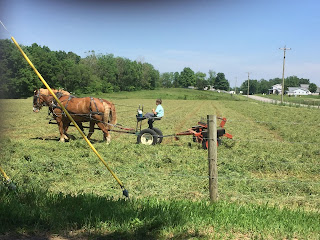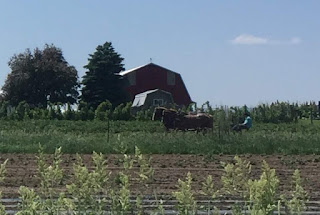Amish Community
Amish, also called Amish Mennonite, member of a Christian group in North America, primarily the Old Order Amish Mennonite Church. The church originated in the late 17th century among followers of Jakob Ammann.
History And Church Structure
Jakob Ammann (c. 1644–c. 1730) was a Mennonite leader whose controversial teachings caused a schism among his coreligionists in Switzerland, Alsace, and southern Germany.Following Jesus’ example, he introduced foot washing into the worship service and taught that church members should dress in a uniform manner, that beards should not be trimmed, and that it was wrong to attend services in a state church.
The Amish began emigrating to North America early in the 18th century; they first settled in eastern Pennsylvania, where a large settlement remains.
Most traditional Amish are members of the Old Order Amish Mennonite Church. In the early 21st century there were about 250,000 Amish living in more than 200 Old Order Amish settlements in the United States and Canada; the largest were located in Pennsylvania, Ohio, Indiana, Iowa, Illinois, and Kansas.
Their settlements are divided into church districts, autonomous congregations of about 75 baptized members. If the district becomes much larger, it is again divided, because members meet in each other’s homes. There are no church buildings. Each district has a bishop, two to four preachers, and an elder; but there are no general conferences, mission groups, or cooperative agencies.
Beliefs And Way Of Life
Humility, family, community, and separation from the world are the mainstays of the Amish. Everyday life and custom are governed by an unwritten code of behaviour called the Ordnung, and shunning (Meidung) remains an integral way in which the community deals with disobedient members. In formal religious doctrine, the Amish differ little from the Mennonites.Religious services are conducted in High German, and Pennsylvania Dutch (seePennsylvania German)—an admixture of High German, various German dialects, and English—is spoken at home and at religious services. The services are held on a rotating basis in family homes and barns. A large wagon, filled with benches for the service and dishes and food for the meal that follows, will often be pulled to the host’s property. In most Amish homes a special place is reserved alongside the Bible for the Martyr’s Mirror, a book chronicling Amish history and honouring the many Amish, Mennonite, and Anabaptist forebears who died for their faith.
The Amish are best known for their plain clothing, most of it self-made, and nonconformist lifestyle. Men and boys wear broad-brimmed black hats, dark-coloured suits, straight-cut coats without lapels, broadfall pants, suspenders, solid-coloured shirts, and black socks and shoes. Their shirts may fasten with conventional buttons, but their coats and vests fasten with hooks and eyes. Men grow beards after they marry but are forbidden to have mustaches.
Old Order Amish women and girls wear bonnets, long full dresses with capes over the shoulders, shawls, and black shoes and stockings; their capes and aprons are fastened with straight pins or snaps. Amish women never cut their hair, which is worn in a bun, and they are not allowed to wear jewelry of any kind. The Amish attire, which is essentially that of 17th-century European peasants, reflects their reluctance to change, their respect for tradition, and their interpretation of biblical strictures against conforming to the ways of the world (e.g., Romans 12:2).
Farming
The Amish are considered excellent farmers, growing and storing the majority of their food and purchasing in stores only staples such as flour and sugar. The Old Order Amish refuse to use most modern farm machinery, preferring the sweat of their brow over the ease of modern conveniences. What modern machinery they do use will often be operated not by electricity but by an alternative power source.
















